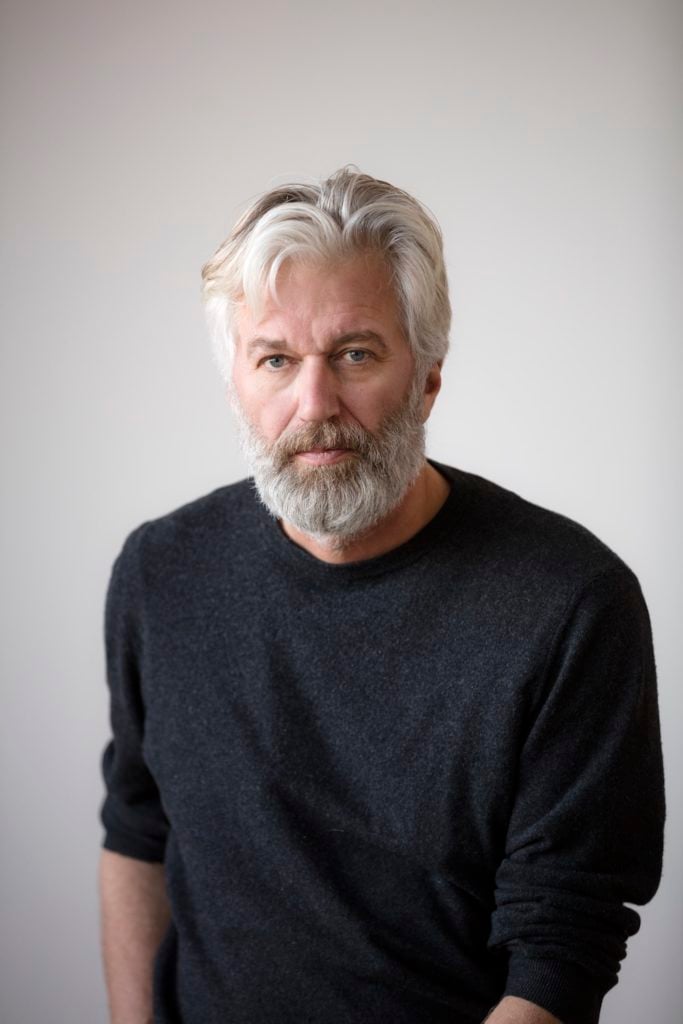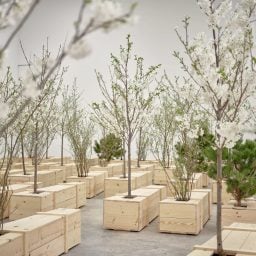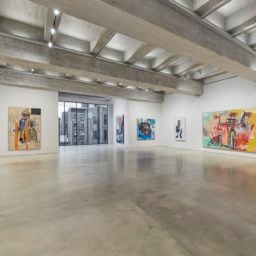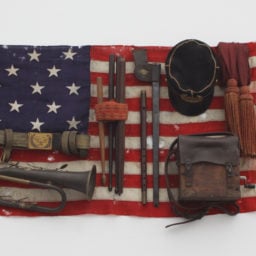Seasoned art dealer and collector Jens Faurschou did not make the decision to open a branch of his foundation in New York lightly, even though he has already been through the process twice before in other cities.
“We’ve done it for many years in Copenhagen, for many years in Beijing, and thought, ‘Now, we dare to try New York,'” the soft-spoken Faurschou told Artnet News ahead of this weekend’s opening of his sprawling ground-floor space in Greenpoint, Brooklyn, a former shoe factory converted into a sleek art venue by architect Markus Dochantschi.
In recent years, New York has become home to a number of private museums dedicated to the collections of wealthy tycoons, from J. Tomilson Hill’s space in Chelsea to the Brant Foundation in the East Village. Faurschou, however, has a far lower profile in the United States than the others, and prefers to let his art collection—full of blue-chip names but also impractical installations with political themes—speak for itself. And in contrast to private museums that quickly become Instagram magnets, the Faurschou Foundation’s inaugural display avoids relying too heavily on eye candy, offering a more balanced visual diet.
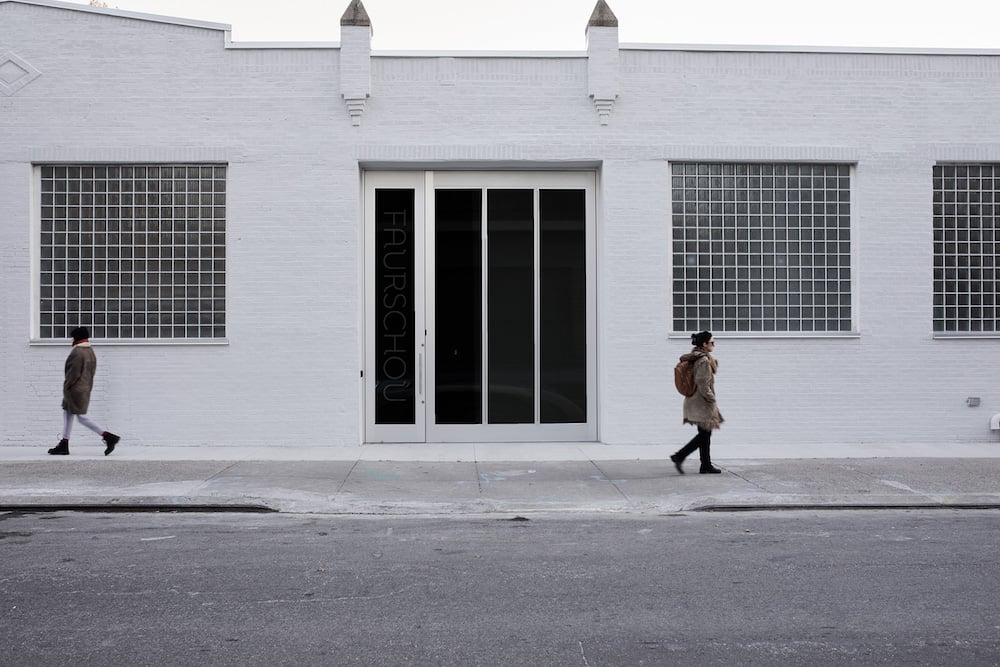
Faurschou New York in Greenpoint Brooklyn. Photo by Ed Gumuchian ©Faurschou Foundation
Faurschou, who made his money selling international contemporary art in his native Denmark and established his eponymous foundation in 2011, did not even know where Greenpoint was when he set out to open in the city. But after opting out of other New York City spaces, such as one in Harlem that did not offer a ground-floor option, he found the industrial space in the fast-changing, gentrifying neighborhood to be just what he was looking for.
“We went out and found this building and I was amazed,” he said. “If you take an Uber, it’s quicker than going from Chelsea to Upper East Side or Midtown. Then we started to look around the area and it’s lovely. It has its own life with a lot of great small restaurants and shops.”
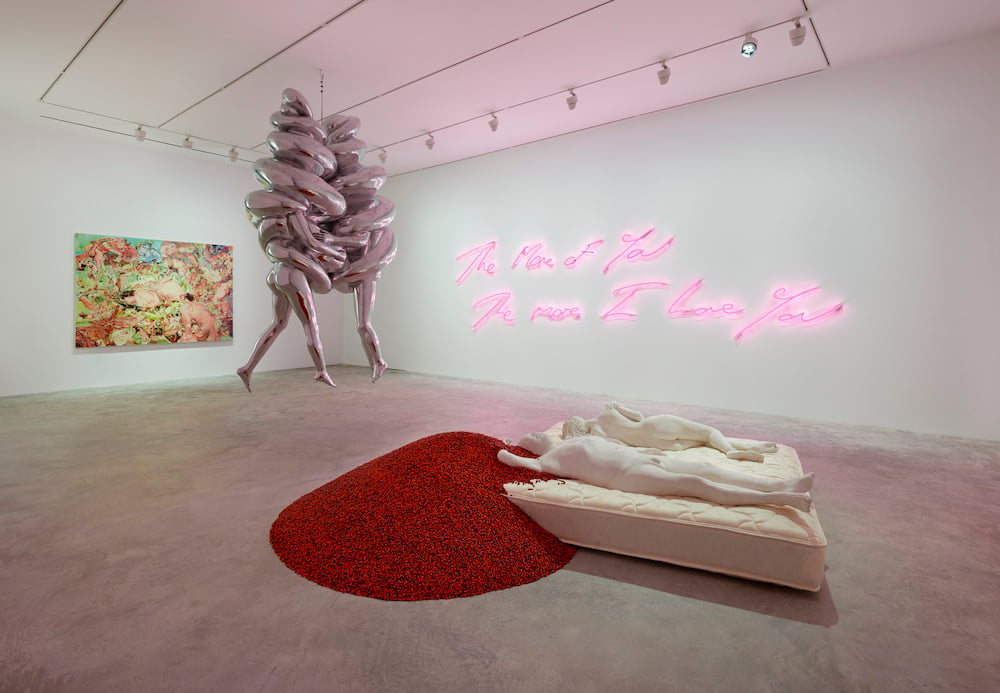
Installation view of the exhibition “The Red Bean Grows in the South”, Faurschou New York, 2019. Clockwise: Cecily Brown, Louise Bourgeois, Tracey Emin, Ai Weiwei. Photo by Tom Powel Imaging, © Faurschou Foundation
Making His Mark
In a city with seemingly endless art options, the next hurdle for Faurschou was to figure out how to stand out. New York represents “a big challenge because we have to do something where we show who we are and what we can do,” he said. He and his team—a small operations staff in New York, plus his wife Masha and his three children at home—decided to debut with a group exhibition that would offer a sampling of the artists in the collection.
The result is a thought-provoking and often startling show of international all-stars titled “The Red Bean Grows In The South,” which touches on topics ranging from the notion of longing to political passions and the desire to break free from repression.
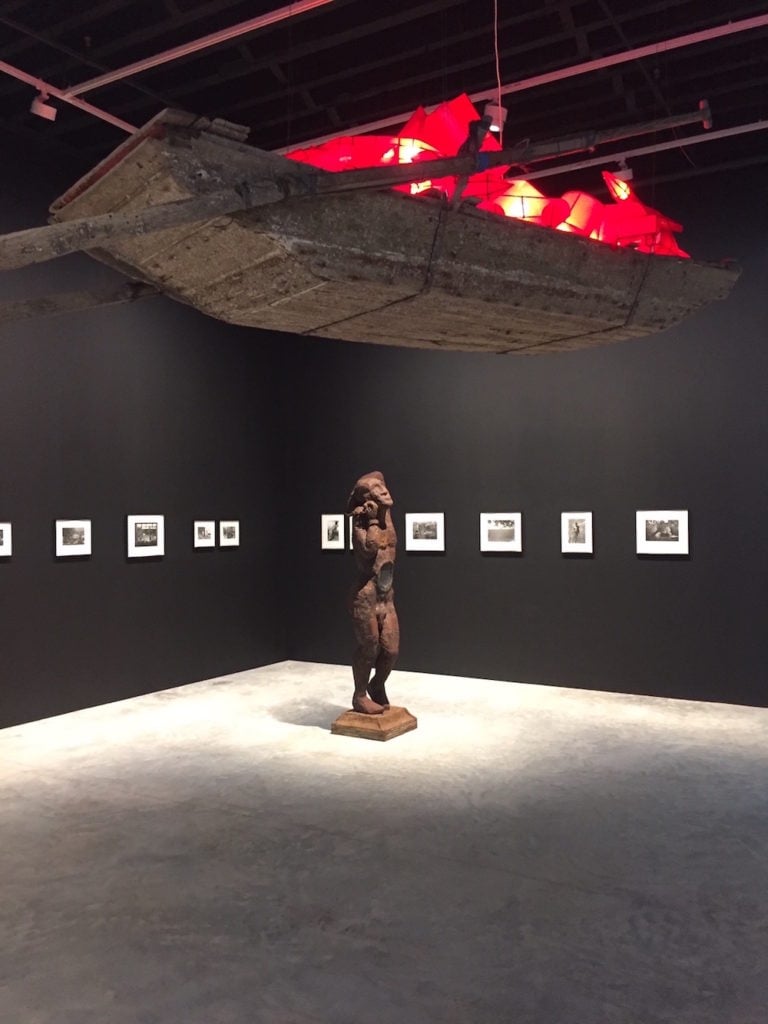
Installation view at Faurschou Foundation with work by Cai Guo-Qiang (ceiling), Alison Saar and photos by Danh Vo. Photo by Eileen Kinsella.
With work by roughly 17 artists including Ai Weiwei, Georg Baselitz, Louise Bourgeois, Cai Guo-Qiang, Tracey Emin, Edward and Nancy Kienholz, Yoko Ono, and Danh Vo, the show also reflects what Faurschou says is a core part of the foundation’s identity: a longstanding relationship with China and a desire to engage Western audiences with important ideas from the region.
According to the catalogue essay, the inaugural presentation revolves around “themes of violence, war, politics, idealism, escapism, desire, hope, dreams and memory,” which would sound like a lofty goal were it not so seamlessly executed here.
Faurschou says the display came together somewhat organically. The first pairing seemed somewhat random at first: Georg Baselitz’s painting Mit Roter Fahne (With a Red Flag) (1965), which depicts a humiliated soldier returning home from war with a diminutive head and tattered uniform, and Paul McCarthy’s monumental CSSC Frederic Remington Charles Bronson (2014–16), which shows the eponymous film star with an outsize cowboy hat riding what appears to be a disintegrating mashup of a melting saddle and a tangled mess of horse legs and hooves.
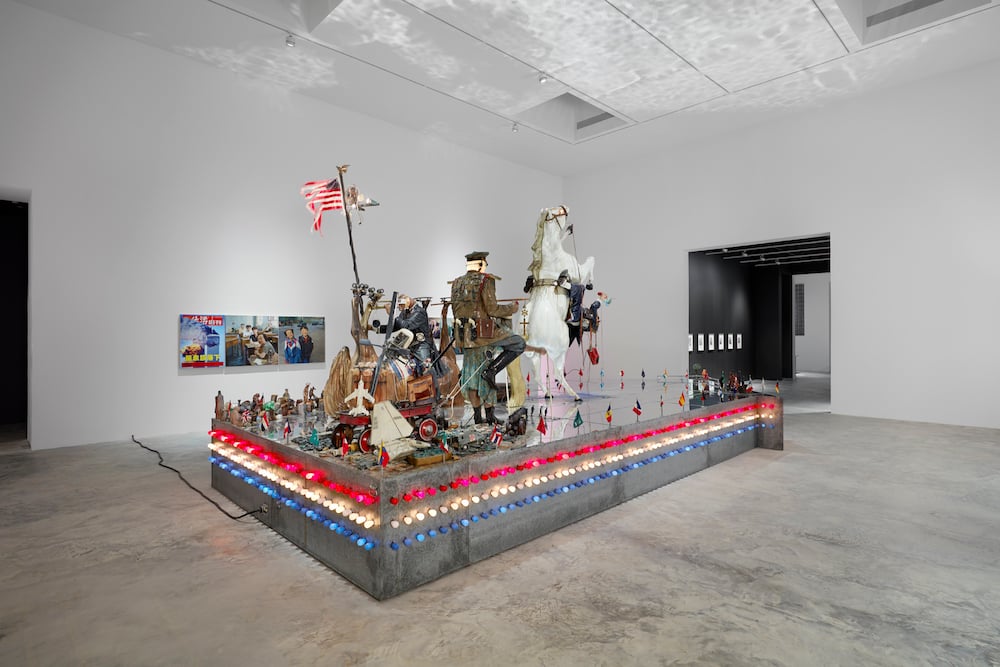
Edward and Nancy Reddin Kienholz. The Ozymandias Parade (1985). Image courtesy the Faurschou Foundation
“You would never really think of putting them together but it just worked—you have this hero coming back from the war and you have Charles Bronson on a horse where the whole structure is falling apart,” Faurschou said. “Maybe even more surprising for me is that [together] they have such strong visual impact. That’s very important.”
Curating by Instinct
This is classic Faurschou—he brings years in the art business to bear on his choices, but he is also willing to let serendipity and instinct take its course. When installing one prominent gallery, for example, where Cai Guo-Qiang’s A Boat with Dreams (2008) hovers from the ceiling above Alison Saar’s haunting life-size sculpture Dying Slave (1989), Faurschou said, “We are missing something.”
It so happened that his son Christian had just returned from a visit to the National Gallery of Denmark to see an exhibition of the work of Danh Vo, who often explores cultural history and the meaning of artistic collaboration in his work. “You need these prints,” he told his father. The body of work presented photos taken by Joseph Carrier, a counterinsurgency specialist in Vietnam from 1962 to 1973 who later became a close friend of the artist. By the time he was forced to leave Vietnam by American authorities because he was gay, Carrier had produced a substantial photographic archive, which he later bequeathed to Vo.
On a whim, Faurschou called up Vo, and the artist happened to be in Denmark. The rest, as they say, is history. Vo’s work, Photographs of Dr. Joseph M. Carrier 1962–1973 (2010), now lines the perimeter of Saar and Cai’s gallery.
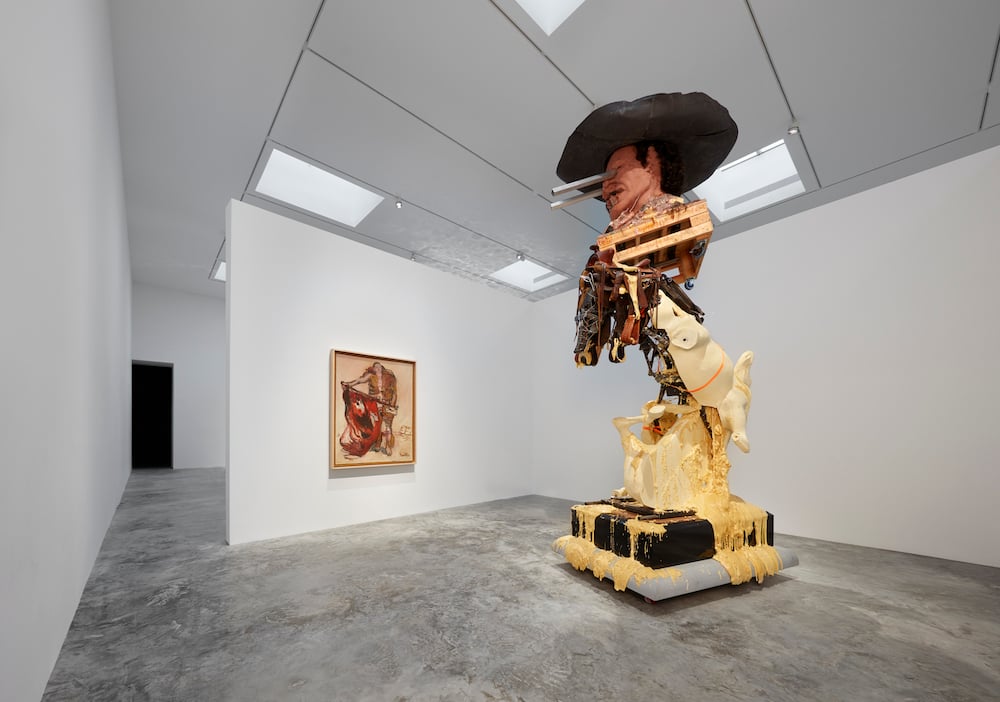
Installation view of “The Red Bean Grows In the South” at the Faurschou Foundation with work by Georg Baselitz and Paul McCarthy. Photo by Tom Powel Imaging, © Faurschou Foundation.
“Then I got excited,” Faurschou recalled. “There’s a connection between the rooms all kind of getting together.” Look no further than rooms like one featuring Yoko Ono’s devastating video Happy Xmas (War is Over) (1971/2003), a compilation of disturbing images that run counter to the iconic John Lennon song. It hangs above a large sculpture of menacing bent saws by Robert Rauschenberg, another artist who was horrified by the Vietnam War, titled Lurid Attack of the Monsters from the Postal News (August 1875).
Also immediately visible from the entrance is Edward and Nancy Kienholz’s massive installation The Ozymandias Parade (1985), which brings together objects the couple collected from flea markets across Europe. (The work is perhaps the only major installation by the couple on view in the city, as they have not been well collected by New York museums.)
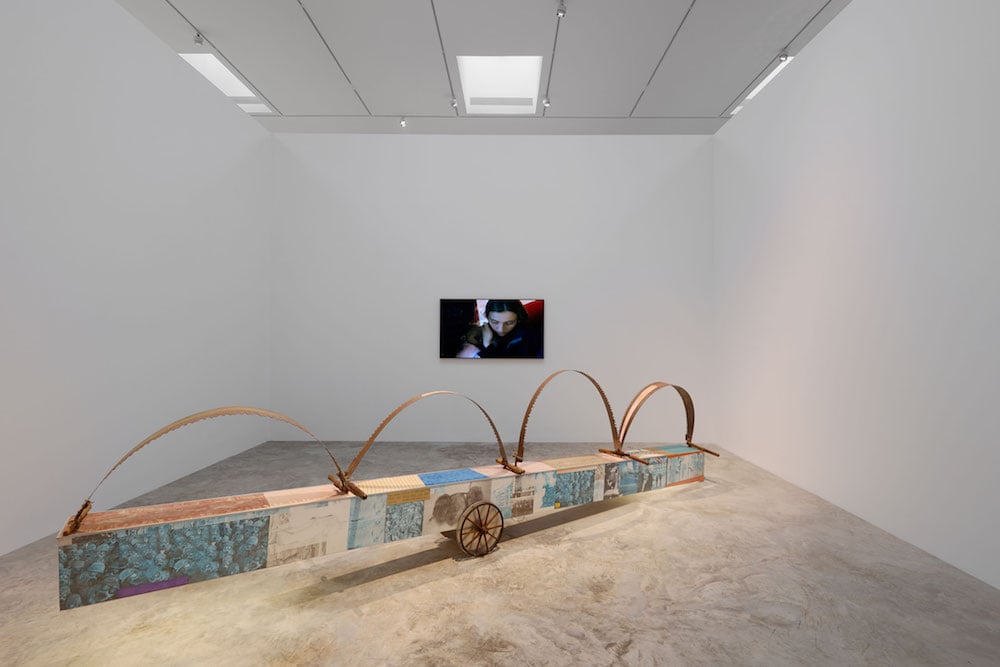
Installation view of “The Red Bean Grows In the South” at the Faurschou Foundation with work by Yoko Ono and Robert Rauschenberg. Photo by Tom Powel Imaging, © Faurschou Foundation.
Going forward, Faurschou is planning roughly two exhibitions a year. Just don’t expect the kind of hit-parade Instagram bait you might find at other institutions. “I hope with this exhibition that it makes you think. It’s not just to go in and say, ‘This was beautiful. This was fun,'” Faurschou said. “I think it digs deeper. And I think we live in a time where its really important that people don’t live on the surface.”
